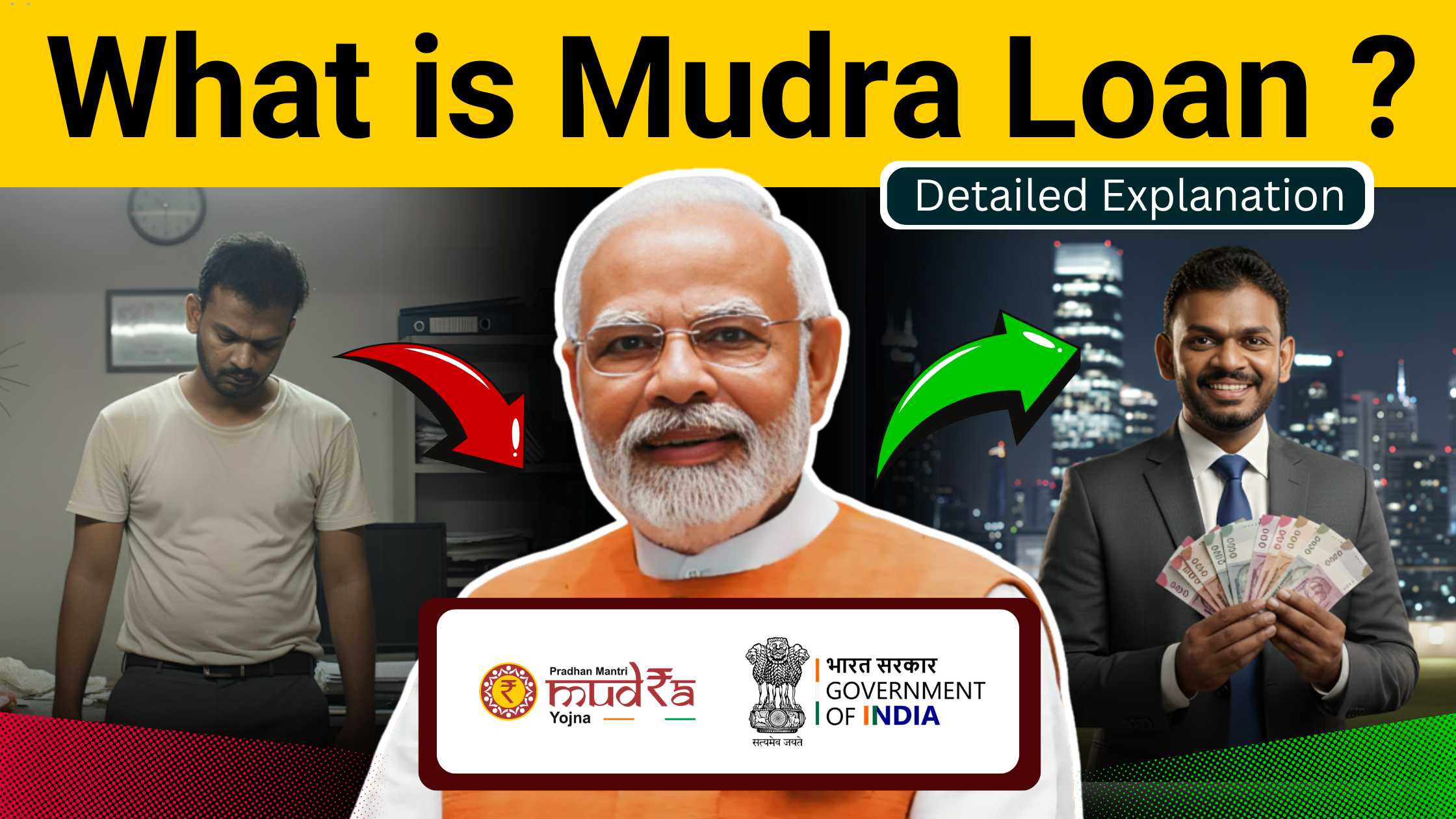How to Avoid Rejection of MSME Loans ? : Comprehensive Guide 2025
How to Avoid Rejection of MSME Loans : In the dynamic economic landscape of India, Micro, Small, and Medium Enterprises (MSMEs) play a critical role in driving innovation, job creation, and inclusive economic growth. Yet, one of the most common challenges faced by these enterprises is access to timely and adequate credit. MSME loan rejection is a growing concern, especially as the government and financial institutions continue to push for formalization and digital integration. As we move into 2025, understanding the intricacies of MSME loan approvals and mastering the art of avoiding rejection is more important than ever.
Table of Contents
This comprehensive guide explores the reasons behind MSME loan rejections and offers practical, updated strategies to ensure your business application gets the green light from lenders. Whether you’re a startup or an established unit seeking expansion capital, this guide will arm you with the insights needed to secure funding successfully.
Understanding MSME Loans in 2025

MSME loans are financial instruments specifically designed to meet the funding requirements of micro, small, and medium-sized enterprises. These loans may be availed from banks, NBFCs, and fintech lenders for various purposes including working capital, equipment purchase, business expansion, marketing, or inventory.
Also Read : Personal Loan Approval Process Explained.
In 2025, with the increasing digitization of India’s financial ecosystem and government-backed initiatives such as Udyam Registration, CGTMSE, Mudra Yojana, and ECLGS, availing an MSME loan has become more structured and transparent. However, despite these advancements, loan rejection rates remain high due to several avoidable errors and systemic misalignments.
Top Reasons for MSME Loan Rejection
1. Poor Credit Score
A major reason for MSME loan rejection is a low credit score, both for the business and the proprietor. Financial institutions often assess your CIBIL score (generally above 700 is preferred) to evaluate your creditworthiness.
2. Lack of Proper Documentation
Missing or inaccurate documentation like GST returns, bank statements, income tax returns, or business licenses can severely hinder the approval process.
3. Weak Business Plan
Lenders look for businesses with a clear revenue model, future growth projections, and cash flow management. An incomplete or poorly structured business plan can trigger rejection.
4. Unstable Financials
Irregular cash flows, multiple bounced cheques, or inconsistent profit margins indicate financial instability, making lenders skeptical.
5. High Existing Liabilities
If your business already has high outstanding debts or loans, it could affect your debt-to-income (DTI) ratio, causing rejection.
6. Lack of Collateral (for Secured Loans)
In the case of secured MSME loans, failing to provide adequate collateral or overvalued assets can result in disapproval.
7. Non-Compliance with Regulatory Requirements
MSMEs not registered under Udyam, or failing to adhere to GST filings, income tax submissions, and business registration, may get their applications rejected outright.
High-Reaching Keywords to Focus in 2025
To stay relevant and rank high on search engines, MSMEs must focus on keywords such as:
- MSME loan rejection reasons
- How to avoid MSME loan rejection
- MSME loan approval tips 2025
- Improve credit score for MSME loans
- Udyam registration benefits
- CGTMSE loan eligibility
- MSME business plan for loan
- Documents for MSME loan
- MSME loan without collateral 2025
- Get MSME loan approved fast
How to Avoid Rejection of MSME Loans: Step-by-Step Strategies
1. Maintain a Healthy Credit Score
Ensure both your personal and business credit reports are in good standing. Timely repayment of EMIs, credit card bills, and utility payments can significantly enhance your score.
- Check your CIBIL and Experian reports regularly.
- Resolve any disputes or overdue balances.
- Avoid multiple loan inquiries in a short time.
2. Prepare a Solid Business Plan
Lenders want to see where their money is going. Your business plan should include:
- Executive summary
- Financial projections
- Market analysis
- Loan utilization plan
- Competitive analysis
- Revenue generation strategy
A strong business model backed by realistic growth forecasts instills lender confidence.
3. Register Your Business
In 2025, Udyam Registration is mandatory to qualify as an MSME in India. It enhances your chances of loan approval under various schemes and facilitates easier documentation.
- Register your business online on the Udyam portal.
- Link PAN and GSTIN for verification.
- Update your enterprise details regularly.
4. Get Your Financials in Order

Transparency and consistency in financial records are key.
- File your GST returns and ITRs on time.
- Maintain updated bank statements.
- Track cash flow using digital accounting software.
- Avoid cheque bounces or excessive withdrawals.
Digitized and accurate bookkeeping improves trustworthiness.
5. Choose the Right Lender
Not all MSME lenders are alike. Evaluate lenders based on:
- Interest rates and processing fees
- Loan tenure and flexibility
- Prepayment policies
- Customer reviews and support
In 2025, fintech platforms like Lendingkart, Indifi, FlexiLoans, and Razorpay Capital are increasingly preferred for faster disbursement and lesser documentation.
6. Utilize Government Schemes
Many government schemes reduce the risk of rejection by offering guarantees and subsidies:
- Credit Guarantee Fund Trust for Micro and Small Enterprises (CGTMSE) provides collateral-free loans.
- MUDRA Loans under PMMY offer credit for micro-enterprises.
- ECLGS continues to provide emergency credit support.
Check eligibility criteria, limits, and documentation carefully before applying.
7. Avoid Multiple Loan Applications Simultaneously
Submitting loan requests to several banks at once can backfire. Each inquiry reflects in your credit history and may lower your score. Focus on well-researched lenders who cater specifically to your business profile.
8. Ensure Correct and Complete Documentation
Commonly required documents in 2025 include:
- Udyam Certificate
- PAN, Aadhaar, and Business Address Proof
- Last 6–12 months Bank Statements
- GST Returns and ITRs (past 2 years)
- Balance Sheets and Profit & Loss Statements
- Existing Loan Statements (if any)
Always cross-check the latest checklist from your lender’s portal or customer support.
9. Show Strong Repayment Capacity
Convince the lender that you can repay the loan without stress. Provide:
- Cash flow statements
- Receivables and payables
- Turnover proof
- Contracts or purchase orders
A positive debt service coverage ratio (DSCR) is a green flag for lenders.
10. Build Credibility Through Digital Footprint
In 2025, your digital presence matters. A business with:
- Active website
- Verified Google Business Profile
- Professional email domain
- Digital accounting and invoicing systems
…is considered more credible and organized by tech-savvy lenders and automated risk-assessment algorithms.
FAQs: Avoiding MSME Loan Rejection
Q: Can MSME loan be rejected due to low turnover?
Yes. Lenders expect minimum revenue thresholds depending on the loan amount. Consider smaller loans or government-backed micro-loans if your turnover is currently low.
Q: Does Udyam registration guarantee loan approval?
No, but it improves eligibility under government schemes and reflects business legitimacy, boosting approval chances.
Q: Can I get MSME loan without collateral?
Yes. Under CGTMSE and fintech lenders, collateral-free MSME loans up to ₹2 crore are offered based on financial health and credit score.
Q: How long should my business be operational to get an MSME loan?
Most lenders prefer at least 6–12 months of business vintage with income proof, though startup loans and schemes exist with exceptions.
Conclusion: Empowering MSMEs with Financial Readiness

As India accelerates its digital economy goals in 2025, MSMEs must adapt to the evolving lending ecosystem by staying transparent, organized, and financially literate. Avoiding MSME loan rejection is not just about ticking boxes—it’s about building a business that inspires confidence in lenders.
Buy Now : Accounting & Billing Website
By maintaining credit discipline, adopting digitized processes, registering under Udyam, filing your returns timely, and preparing strong documentation, you maximize your chances of loan approval. Don’t forget to research your lender, understand the terms, and apply strategically rather than impulsively.
MSME growth in India depends not only on opportunities but on entrepreneurs’ readiness to harness them responsibly.
Disclaimer : This article is for informational purposes only. Loan approval is subject to the policies of individual banks or NBFCs. Please consult your financial advisor before taking any loan decision.
Keywords : How to Avoid Rejection of MSME Loans – How to Avoid Rejection of MSME Loans 2025 – How to Avoid Rejection of MSME Loans Guide



